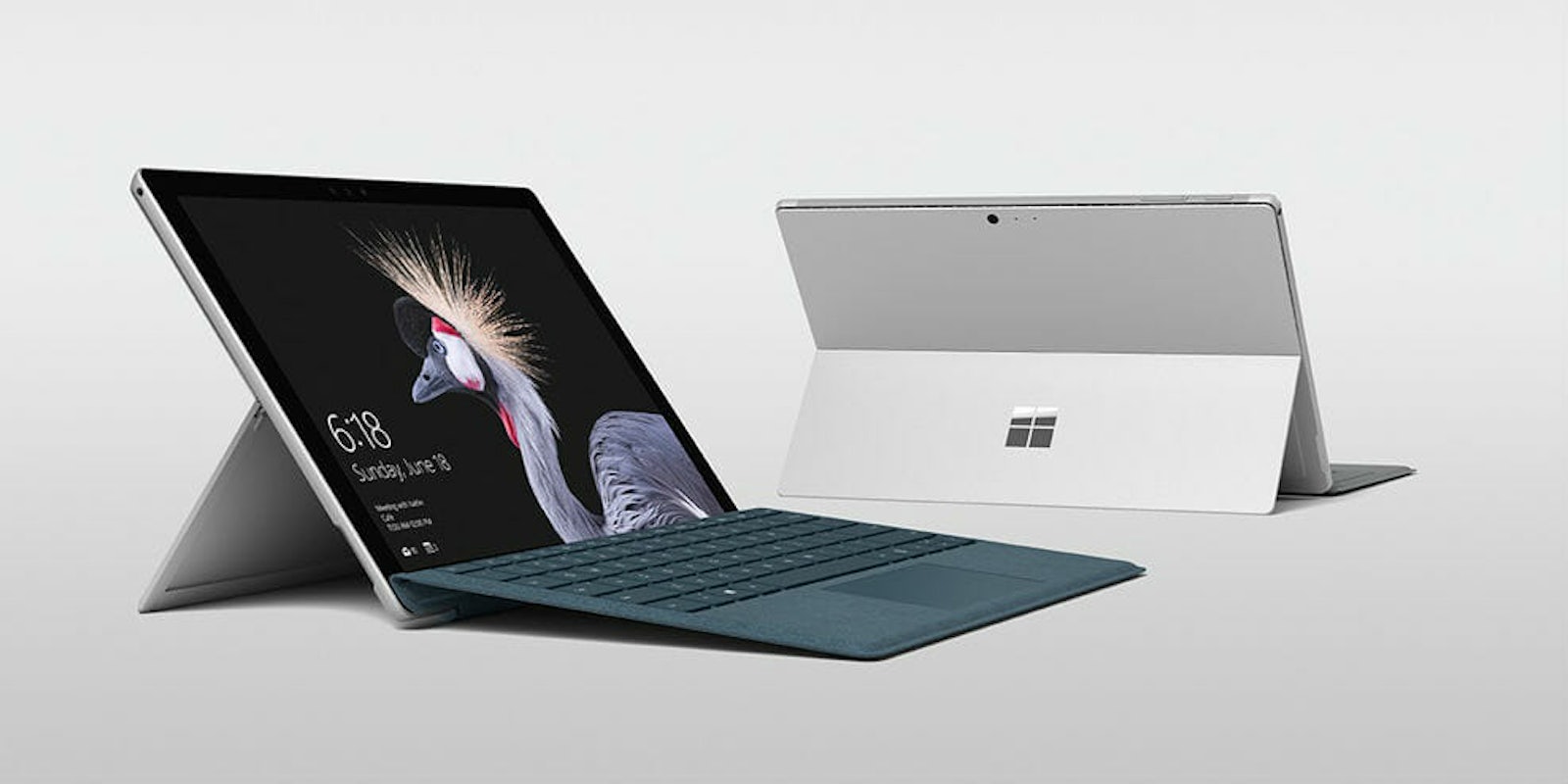Microsoft unveiled the new Windows 10-powered “Surface Pro” during a press conference today, and it’s shaping up to be a more significant upgrade than many predicted.
Some were expecting the Surface Pro 5 to take center stage, but Microsoft is dropping the number, a change that works neatly with the rest of its product line. The new naming should not only clear up confusion with the company’s other “Surface” products, but also suggests a move toward a more standardized Apple-esque upgrading schedule.
Upgraded, versatile, and exceptionally powerful, with iconic Surface design. Meet the new Microsoft #SurfacePro. #MicrosoftEvent pic.twitter.com/o1RQjzlySE
— Microsoft Surface (@surface) May 23, 2017
What isn’t surprising about the laptop/tablet combo is the switch to the new Intel seventh-gen Kaby Lake processors with configurations containing either the m-series or more powerful i-series chipsets. The new processor is not only more powerful, but also slightly more efficient. It will help generate what may be the Surface Pro’s best feature: an estimated 13.5 hours of battery life, 50 percent longer than its predecessor.
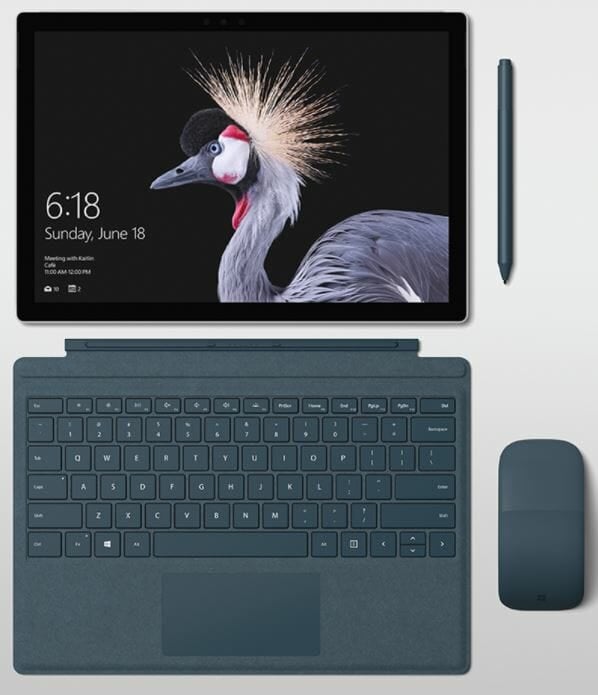
Microsoft claims there are more than 800 new custom parts on the Pro, and while the design looks very similar to the Surface Pro 4 at first glance, there are several notable changes. The corners are more rounded, which is meant to help it feel better when holding it, and the Core i5 model is a bit lighter than previous versions. Both the m5 and i5 processor will ship with a fan-less design, while the more powerful i7 still needs one. Unlike the Surface Pro 4, the SSD will be integrated onto the motherboard. Microsoft says it will help with battery life, but it may not be worth giving up upgradeability (you could buy the 1TB version, but it’ll cost you a whopping $2,700).
Like the Surface Laptop, the Surface Pro does not have a USB-C port, an annoying omission given its rapid adoption with smartphones and laptops. Its ports include a Surface connector, USB 3.0, microSD card reader, headphone jack, and mini DisplayPort.
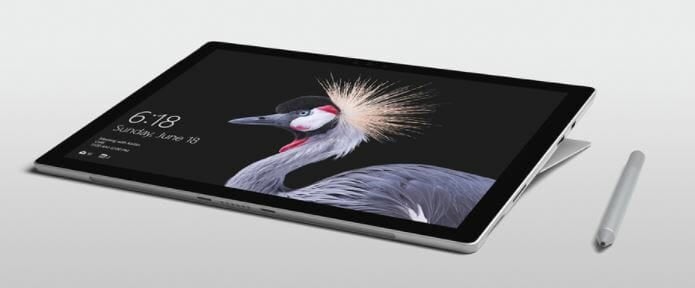
The biggest change to the design is the new hinge, a feature Microsoft has been tinkering with since the first Surface Pro. The latest attempt inherits the Surface Studio’s 165-degree angle for drafting, which allows the 12.5-inch display to rest nearly flat.
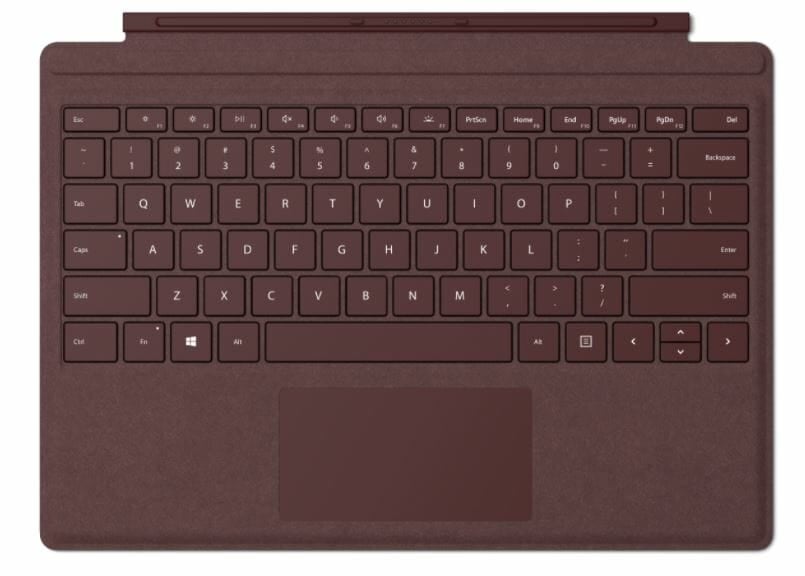
The Surface Pro’s keyboard will now come in several new colors: platinum, burgundy, and cobalt blue. They come with the same Alcantara fabric you’ll find on the Surface Laptop.
Microsoft also added support for the Surface Dial, an accessory that first launched with the Surface Studio last year. Speaking of accessories, the Surface Pen got a complete overhaul. Microsoft removed the clip from the top of the pen, increased its sensitivity, and decreased actuation force. The Surface Pen will come in new colors to match the keyboard.
https://www.youtube.com/watch?v=TCTExFYvL1g
There are a lot of nice additions to the Surface Pro, and it feels in many ways a culmination of the best elements from all of Microsoft’s Surface devices. The Surface Pro inherits the hinge and dial support from the Surface Studio, and Alcantara fabric with new colors from the Surface Laptop. But there are still some glaring disappointments, like the lack of a USB-C port, and the “purchase everything separately” pricing plan, which is worse than ever before.
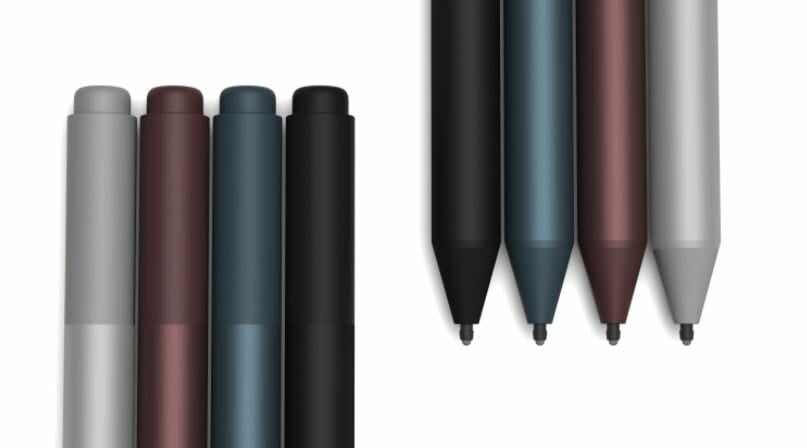
Not only will the Surface Pro exclude the $159 keyboard —a decision reviewers have complained about for years—but the $99 pen will now be sold separately as well.
The Surface Pro is available for preorder today starting at $799 for the m3-edition. The i5 with 4GB of RAM and 128GB SSD costs $1,000, while the minimum configuration I recommend (i5, 8GB RAM, 256GB SSD) shoots up to a hefty $1,300.
It will begin shipping on June 15.

